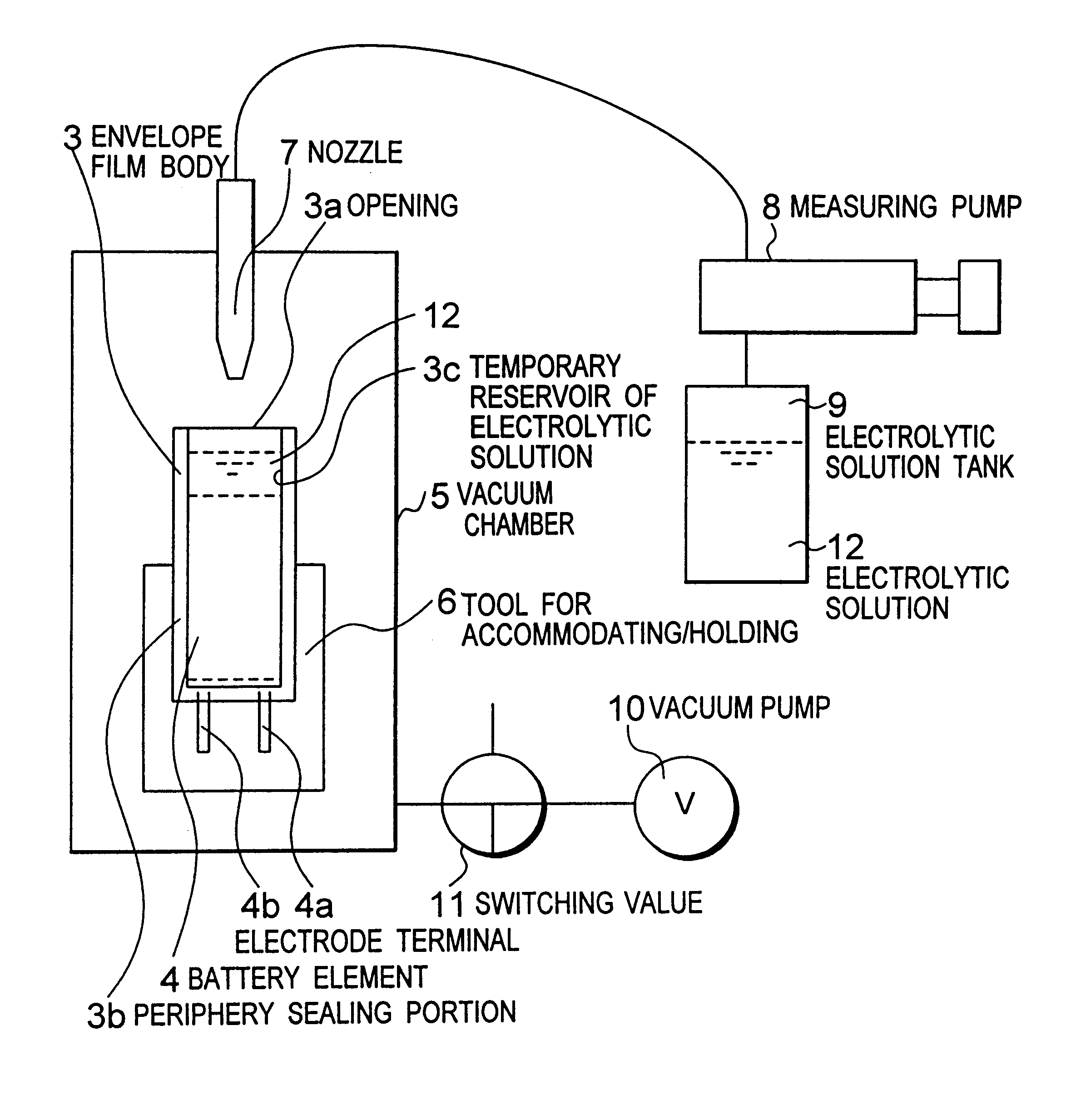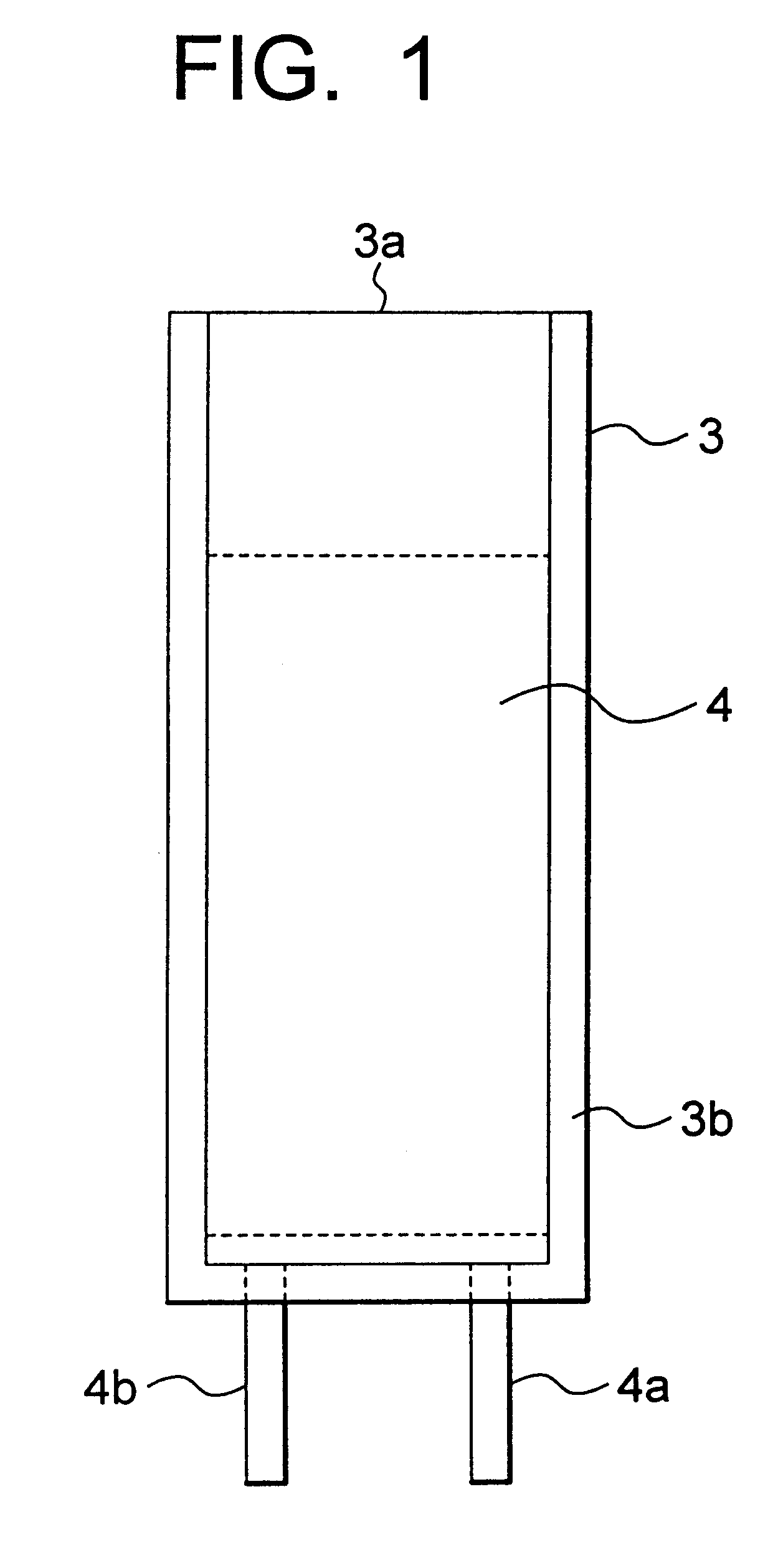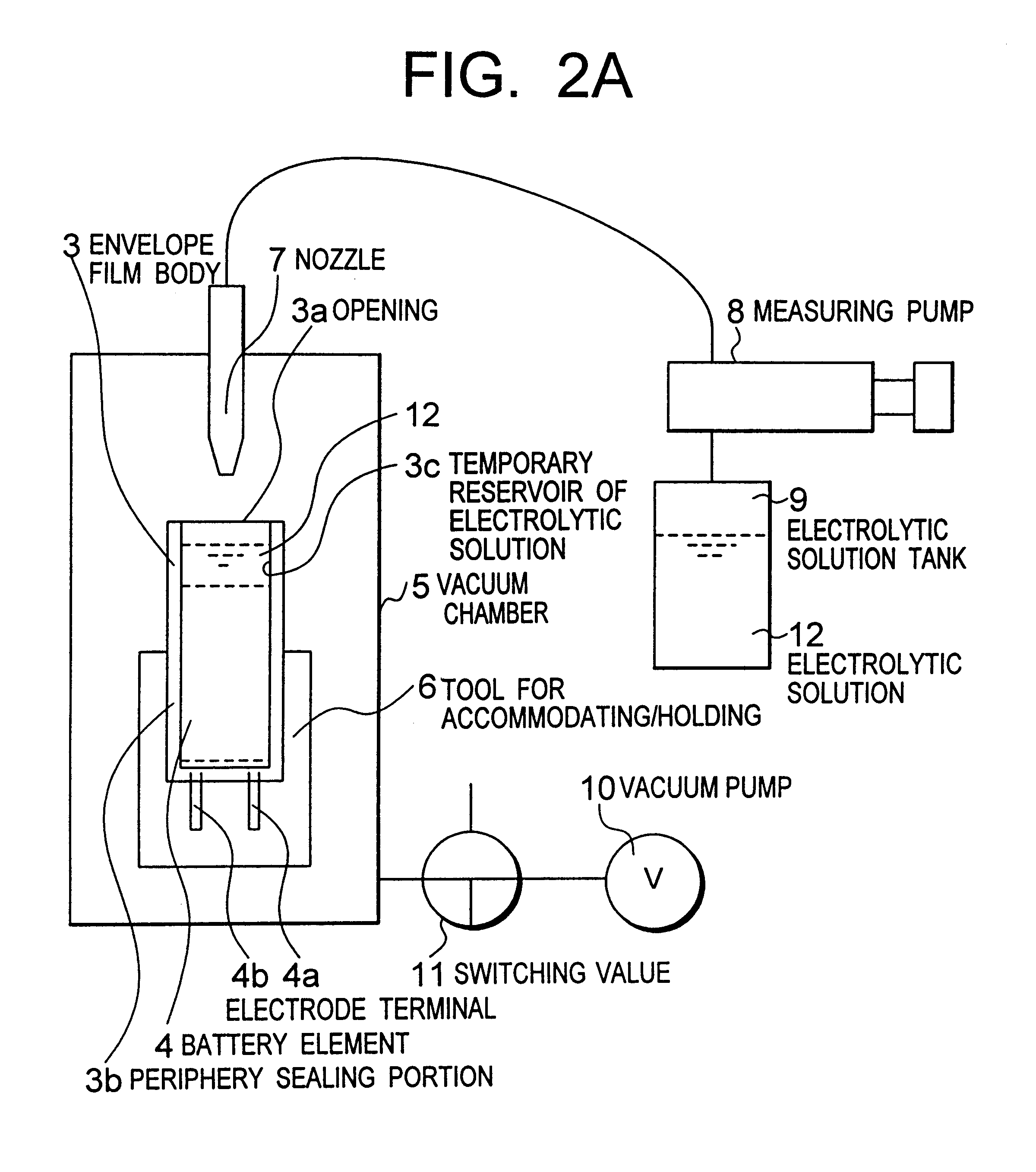Manufacturing method of batteries
a manufacturing method and battery technology, applied in the direction of sustainable manufacturing/processing, cell components, flat cell grouping, etc., can solve the problems of reducing the gap space in the envelope film body 2, the inability to invite fluctuation in battery performance and quality, and the accuracy of electrolytic solution injection
- Summary
- Abstract
- Description
- Claims
- Application Information
AI Technical Summary
Benefits of technology
Problems solved by technology
Method used
Image
Examples
Embodiment Construction
In the following, an embodiment will be explained with reference to FIG. 1 and FIGS. 2A to 2C.
FIG. 1 is a front view showing a substantial constitution of a battery before injection of an electrolytic solution. That is, the figure shows a state where a battery element 4 is accommodated in an envelope film body 3 provided with an opening 3a, which becomes an opening for injecting electrolytic solution, at one end side. Here, the envelope film body 3 is formed in a longer dimension than that of the accommodated battery element 4.
Here, the envelope film body 3 is made of a laminate film in which on both main surfaces of for instance an aluminum foil layers of polyethylene terephthalate resin are disposed, further on one surface thereof a layer of hot-melt resin (layer of for instance polypropylene resin) being disposed. The envelope film body 3 thus formed, with the layer of the hot-melt resin faced to each other, is laminated so as to interpose the battery element 4. One end thereof i...
PUM
| Property | Measurement | Unit |
|---|---|---|
| thickness | aaaaa | aaaaa |
| shape | aaaaa | aaaaa |
| dimension | aaaaa | aaaaa |
Abstract
Description
Claims
Application Information
 Login to View More
Login to View More - R&D
- Intellectual Property
- Life Sciences
- Materials
- Tech Scout
- Unparalleled Data Quality
- Higher Quality Content
- 60% Fewer Hallucinations
Browse by: Latest US Patents, China's latest patents, Technical Efficacy Thesaurus, Application Domain, Technology Topic, Popular Technical Reports.
© 2025 PatSnap. All rights reserved.Legal|Privacy policy|Modern Slavery Act Transparency Statement|Sitemap|About US| Contact US: help@patsnap.com



